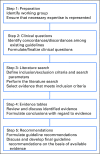Surveillance for Late Effects in Childhood Cancer Survivors
- PMID: 29874139
- PMCID: PMC6804892
- DOI: 10.1200/JCO.2017.77.0180
Surveillance for Late Effects in Childhood Cancer Survivors
Abstract
Many childhood cancer survivors carry a significant risk for late morbidity and mortality, a consequence of the numerous therapeutic exposures that contribute to their cure. Focused surveillance for late therapy-related complications provides opportunities for early detection and implementation of health-preserving interventions. The substantial body of research that links therapeutic exposures used during treatment of childhood cancer to adverse outcomes among survivors enables the characterization of groups at the highest risk for developing complications related to specific therapies; however, methods available to optimize screening strategies to detect these therapy-related complications are limited. Moreover, the feasibility of conducting clinical trials to test screening recommendations for childhood cancer survivors is limited by requirements for large sample sizes, lengthy study periods, prohibitive costs, and ethical concerns. In addition, the harms of screening should be considered, including overdiagnosis and psychological distress. Experts in several countries have developed guideline recommendations for late effects surveillance and have collaborated to harmonize these recommendations internationally to enhance long-term follow-up care and quality of life for childhood cancer survivors. Methods used in these international efforts include systematic literature searches, development of evidence-based summaries, rigorous evaluation of the evidence, and formulation of consensus-based surveillance recommendations for each late complication. Alternate methods to refine recommendations, such as cumulative burden assessment and risk prediction and cost-effectiveness modeling, may provide novel approaches to guide survivorship care in this vulnerable population and, thus, represents a worthy objective for future international survivorship collaborations.
Figures


References
-
- Trama A, Botta L, Foschi R, et al. : Survival of European adolescents and young adults diagnosed with cancer in 2000-07: Population-based data from EUROCARE-5. Lancet Oncol 17:896-906, 2016 - PubMed
-
- Oeffinger KC, Mertens AC, Sklar CA, et al. : Chronic health conditions in adult survivors of childhood cancer. N Engl J Med 355:1572-1582, 2006 - PubMed
Publication types
MeSH terms
Grants and funding
LinkOut - more resources
Full Text Sources
Other Literature Sources
Medical

